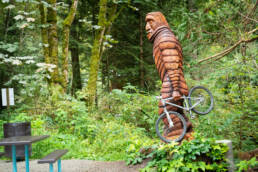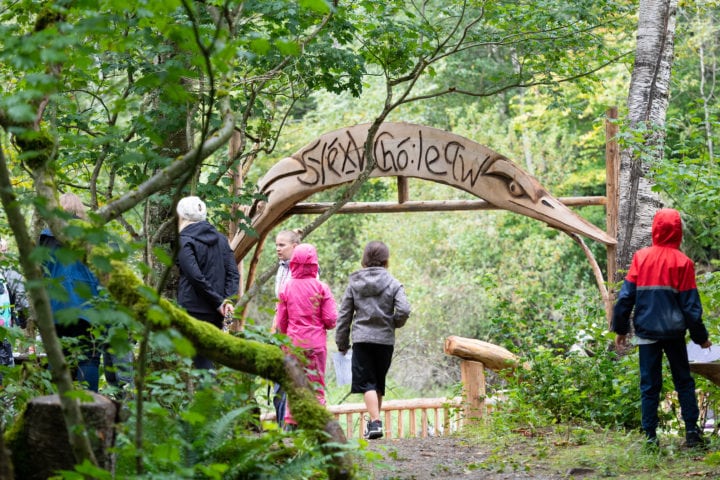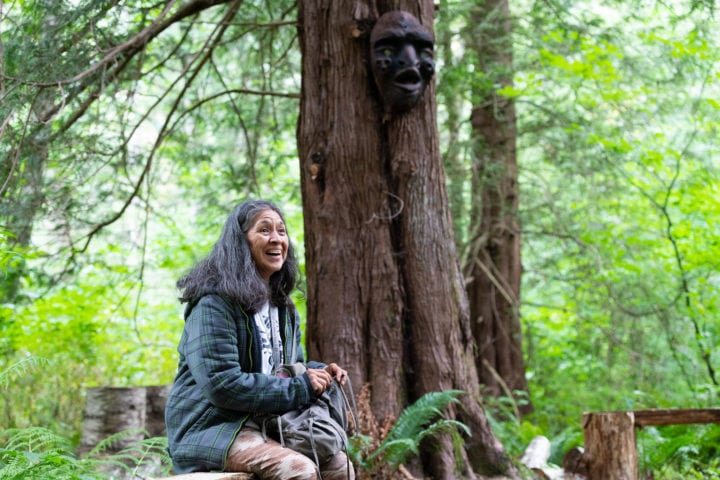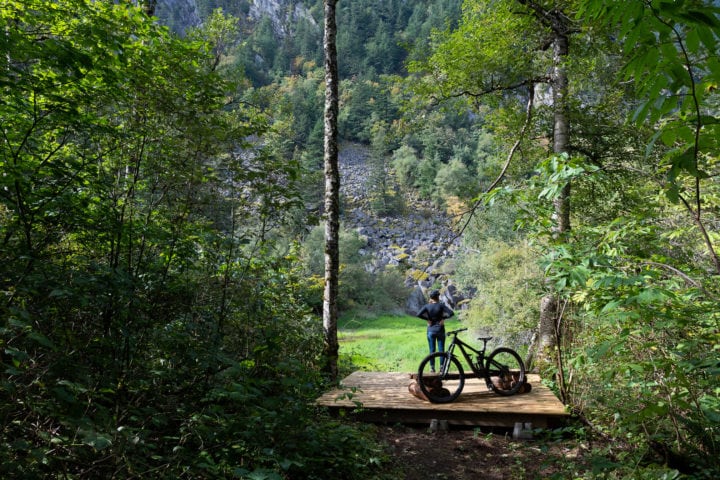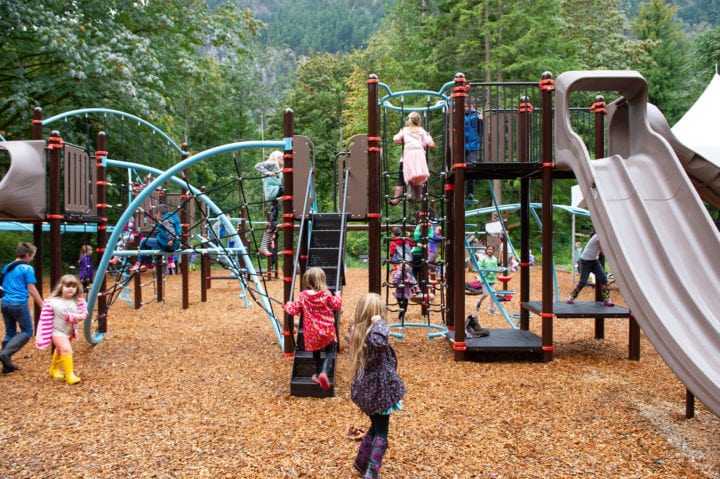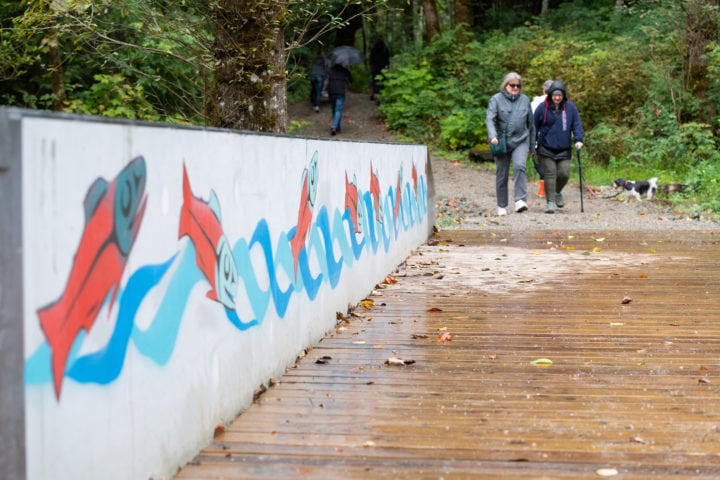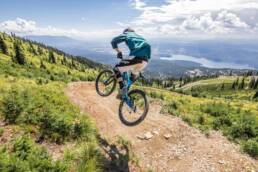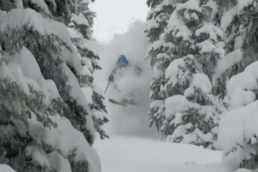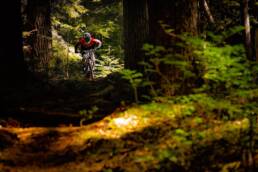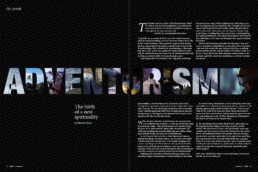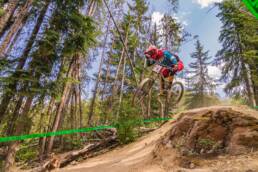British Columbia’s Aboriginal Youth Mountain Bike Program were involved in building the unique mtb adventure park just west of the town of Hope. Words by Patrick Lucas.
On a quiet stretch of the Lougheed Highway #7, just west of the town of Hope at the far eastern reaches of the Fraser Valley, a unique park has been carved out of the dark rain-soaked forests that hug the base of towering mist-covered peaks on the lands of the Sq’ewa:lxw First Nation. It was to this site the Aboriginal Youth Mountain Bike Program (AYMBP) and our trail specialist, Thomas Schoen of First Journey Trails, were invited to participate in creating the “Syéx̱w Chó:leqw Adventure Park.”
The AYMPB pride ourselves on assisting Indigenous communities to articulate and realize their vision for creating trails and parks that will allow their people and their youth to reconnect with their lands and territories and we’ve worked with dozens of Nations in some of the most challenging terrain in the world. However, when we arrived at the site and stepped out of our truck at the side of the highway and stared into an imposing wall of towering Birch, Pine, Alder trees, their trunks tightly wound and choked with massive thickets of thorn bushes, our first instinct was to simply drive away.
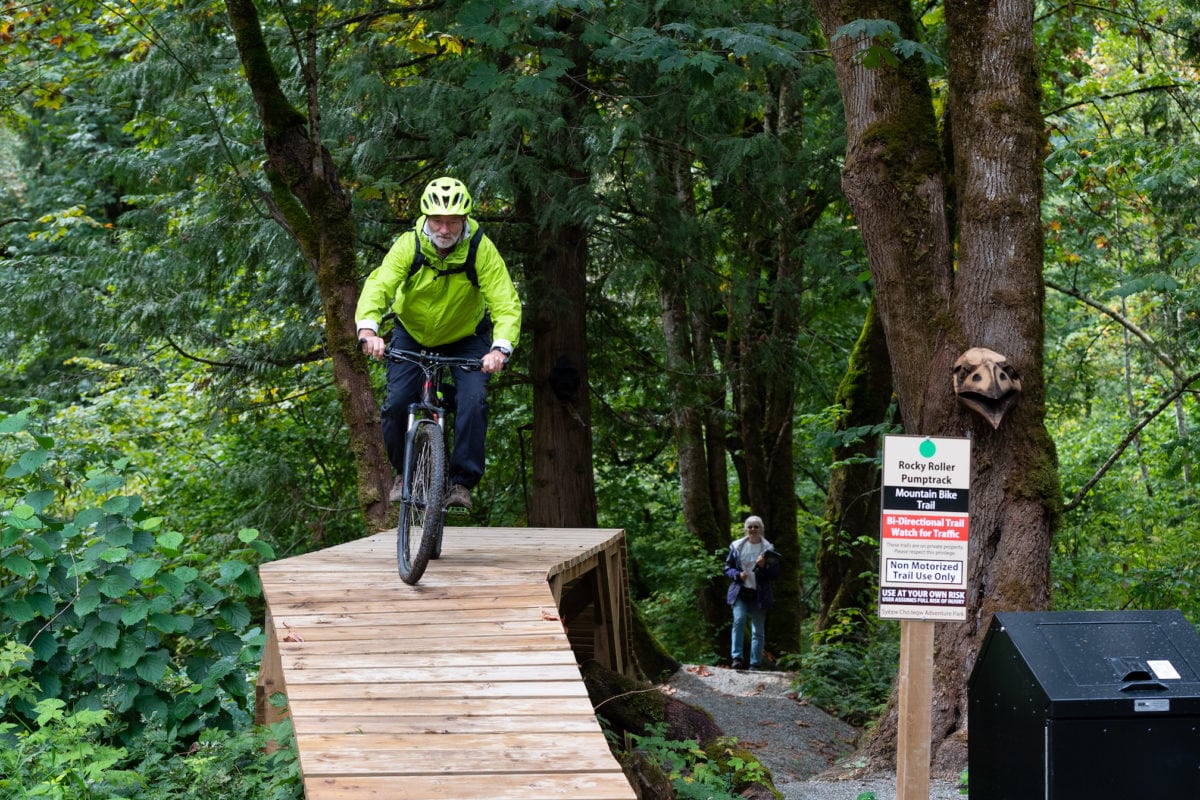
The vision of the Sq’ewa:lxw First Nation was to revitalize the site and create a park of trails that would provide recreational opportunities for their youth and membership, as well as the surrounding communities.
“This land has always been a place for adventure. The Sto:lo people played on these lands. This project is about bringing that back, creating a space where people can come and walk, relax, play, and refresh their spiritual connection to nature and the land.” was how Mike Bellegard, the Economic Development Officer for the Nation, described the project. “We just need to find a way in,” he added seeing the look of disbelief on our faces. He pulled out a machete and beckoned with the blade for us to follow. “This way, I’ve started a path for us.” He then stepped into the thick bushes and disappeared.
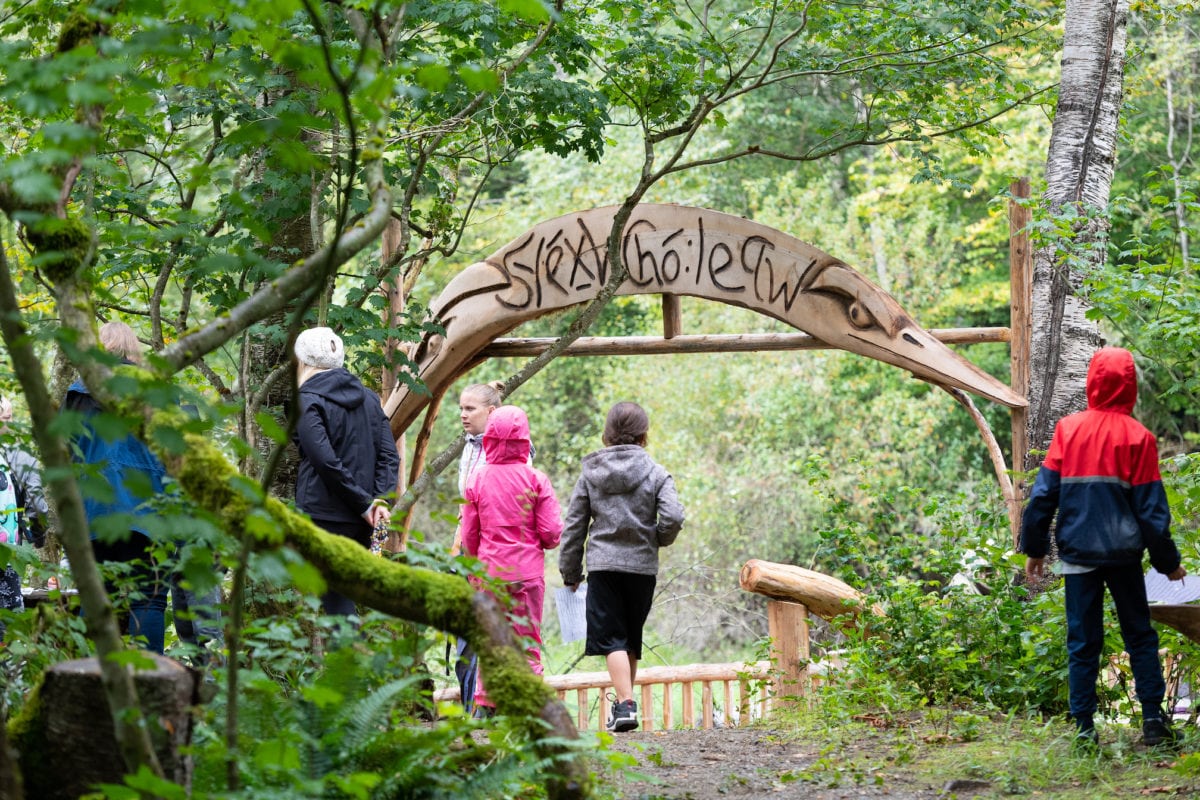
Thomas and I followed him in, crouching down into a tunnel hacked through the centre of a massive tangle of thorn bushes and Devil’s Club, the vegetation pulling at our hair and clothing. We hacked, pulled and pushed our way through the thick vegetation towards the base of the mountain that rose up above the site.
Suddenly we emerged from the thorn bushes and found ourselves standing in an open patch of forest, huge cedar and hemlock trees formed a thick canopy overhead allowing bright sunlight to reach down and illuminate a forest floor covered in ferns the size of small cars and carpets of moss. Though we were less than 500 metres from the highway, the forest around us was silent. We continued walking through the woods and came to the edge of a large slough, a dried creek bed that runs between the edge of the reserve and a steep slope of rocky debris that runs directly up the side of the mountain. For thousands of years, this site has seen endless rock falls and slides, building up a massive pile of debris. Along the slough, amongst long brown grasses dead from the autumn frosts, were boulders the size of small houses that had come down from the mountain cliffs above. Mike stood a few feet away watching us. He didn’t have to say anything. We were in.
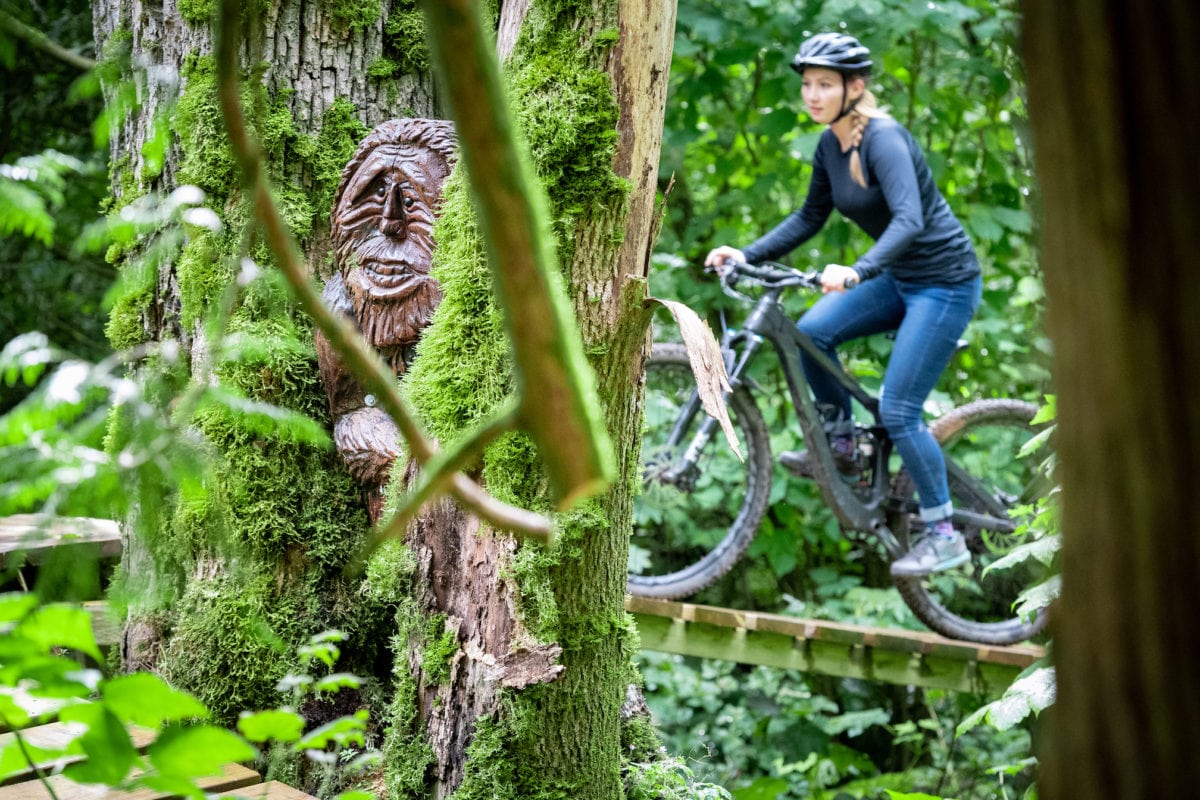
Throughout the winter months, in endless torrential downpours, our trail crew worked to transform the site. The goal was not about length or long hikes orrides, but about creating a unique and memorable nature experience for a broad range of users. The Sq’ewa:lxw First Nation are the proud owners and operators of the Ruby Creek Art Gallery, so we set out to turn the site into a work of art with fun, playful trails and sculptures by Sts’ailes artist Rocky LaRock, local artist Sherman Moore, and a mural painting by Haida artist Corey Bulpitt.
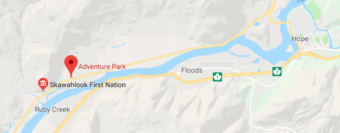
Our trail crew ensured every metre of trail was a work of craftsmanship, enhancing and articulating the story and vibrant energy of the land and forest. This includes a short network of beginner level walking and cycling trails in a series of loops through the forest that captures and highlights the ancient trees. A massive viewing platform with a captivating vista of the surrounding forests, mountains, the rock slide and boulders. A small bike park and pump track provides an opportunity for building riding skills and courage. Lastly, there is a 90,000-square-foot playground. Open to the general public, the adventure park will provide a unique space suitable for families and all levels of riders and recreationalists.
In Halq’eméylem, “Syéx̱w Chó:leqw” means Rock Slide in the Forest, a tribute to the massive rock slides that have shaped the area where the park now resides. For the Sto:lo and the Sq’ewa:lxw it has been their home and playground for thousands of years. It has been one of the AYMBP’s greatest honours to assist them in reconnecting to these lands and realizing their vision.
Related Stories
Lost and Found in Whistler Blackcomb’s Terrain Park
For anyone whoever needed a reminder why pipe, park and urban skiing are fun as hell, here it is. Amazing work,…
Whitefish Bike Park To Open June 17
The mountain biking season begins Saturday, June 17 at the Whitefish Bike Park in Montana. Uploads will be available…
Powderwhore’s “Choose Your Adventure” Trailer
Despite the underwhelming winter of 2011-12, in which snowfall reached near record lows and unstable avalanche…
Whistler Mountain Bike Park to Expand Creekside Zone
Whistler Mountain Bike Park has just confirmed it will be adding 15 kilometres of new trail to its Creekside Zone by…
Summer 06 – The Four Points of Adventure
For centuries human beings have broken complex realities and concepts into groupings of four called quaternities.…
BC Riders Win Big At MTB DH Championships
BC riders took all four of the Elite and Junior titles on Sunday at the 2018 Canadian Downhill Championships in…


